Raymond Leung
Unsupervised ore/waste classification on open-cut mine faces using close-range hyperspectral data
Feb 09, 2023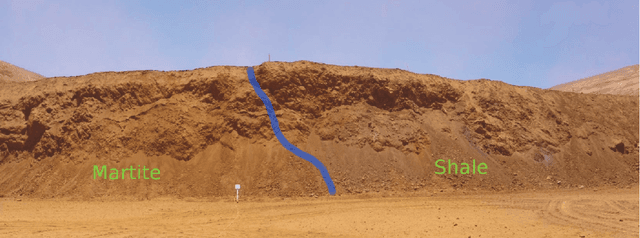
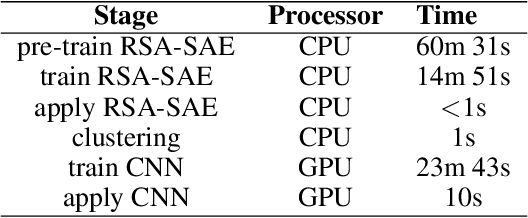
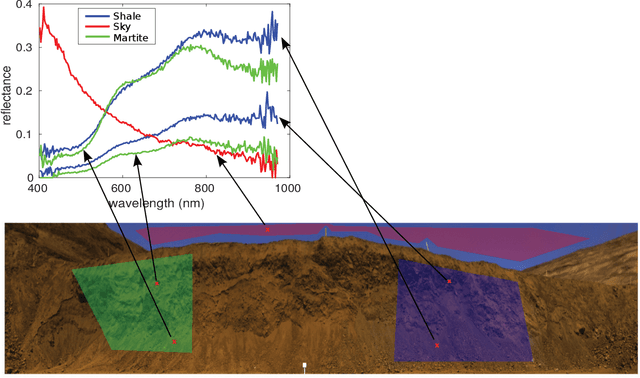
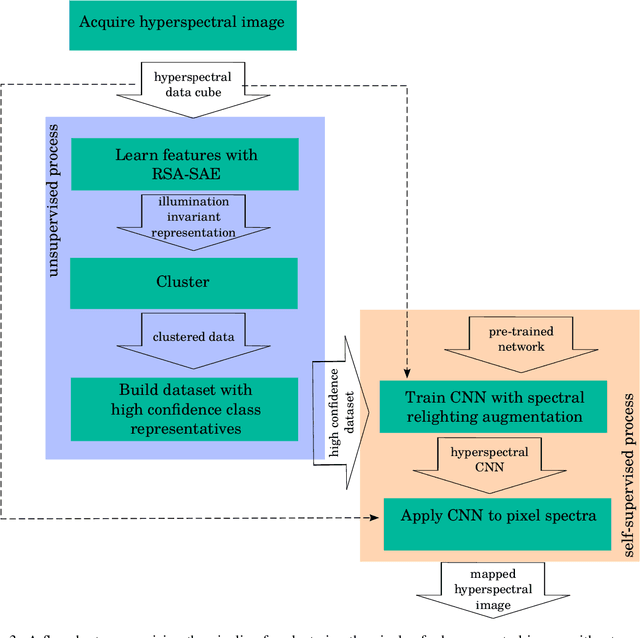
Abstract:The remote mapping of minerals and discrimination of ore and waste on surfaces are important tasks for geological applications such as those in mining. Such tasks have become possible using ground-based, close-range hyperspectral sensors which can remotely measure the reflectance properties of the environment with high spatial and spectral resolution. However, autonomous mapping of mineral spectra measured on an open-cut mine face remains a challenging problem due to the subtleness of differences in spectral absorption features between mineral and rock classes as well as variability in the illumination of the scene. An additional layer of difficulty arises when there is no annotated data available to train a supervised learning algorithm. A pipeline for unsupervised mapping of spectra on a mine face is proposed which draws from several recent advances in the hyperspectral machine learning literature. The proposed pipeline brings together unsupervised and self-supervised algorithms in a unified system to map minerals on a mine face without the need for human-annotated training data. The pipeline is evaluated with a hyperspectral image dataset of an open-cut mine face comprising mineral ore martite and non-mineralised shale. The combined system is shown to produce a superior map to its constituent algorithms, and the consistency of its mapping capability is demonstrated using data acquired at two different times of day.
* Manuscript has been accepted for publication in Geoscience Frontiers. Keywords: Hyperspectral imaging, remote sensing, mineral mapping, machine learning, convolutional neural networks, transfer learning, data augmentation, illumination invariance
Empirical observations on the effects of data transformation in machine learning classification of geological domains
Jun 04, 2021



Abstract:In the literature, a large body of work advocates the use of log-ratio transformation for multivariate statistical analysis of compositional data. In contrast, few studies have looked at how data transformation changes the efficacy of machine learning classifiers within geoscience. This letter presents experiment results and empirical observations to further explore this issue. The objective is to study the effects of data transformation on geozone classification performance when machine learning (ML) classifiers/estimators are trained using geochemical data. The training input consists of exploration hole assay samples obtained from a Pilbara iron-ore deposit in Western Australia, and geozone labels assigned based on stratigraphic units, the absence or presence and type of mineralization. The ML techniques considered are multinomial logistic regression, Gaussian na\"{i}ve Bayes, kNN, linear support vector classifier, RBF-SVM, gradient boosting and extreme GB, random forest (RF) and multi-layer perceptron (MLP). The transformations examined include isometric log-ratio (ILR), center log-ratio (CLR) coupled with principal component analysis (PCA) or independent component analysis (ICA), and a manifold learning approach based on local linear embedding (LLE). The results reveal that different ML classifiers exhibit varying sensitivity to these transformations, with some clearly more advantageous or deleterious than others. Overall, the best performing candidate is ILR which is unsurprising considering the compositional nature of the data. The performance of pairwise log-ratio (PWLR) transformation is better than ILR for ensemble and tree-based learners such as boosting and RF; but worse for MLP, SVM and other classifiers.
Surface Warping Incorporating Machine Learning Assisted Domain Likelihood Estimation: A New Paradigm in Mine Geology Modelling and Automation
Feb 15, 2021


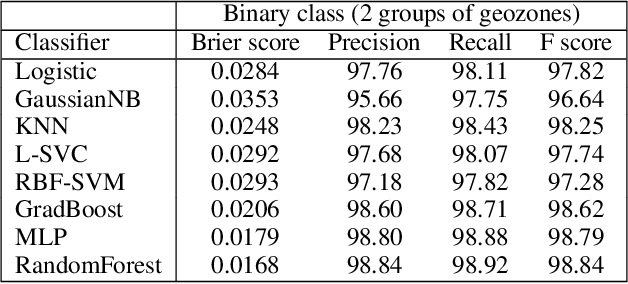
Abstract:This paper illustrates an application of machine learning (ML) within a complex system that performs grade estimation. In surface mining, assay measurements taken from production drilling often provide rich information that allows initially inaccurate surfaces created using sparse exploration data to be revised and subsequently improved. Recently, a Bayesian warping technique has been proposed to reshape modeled surfaces based on geochemical and spatial constraints imposed by newly acquired blasthole data. This paper focuses on incorporating machine learning in this warping framework to make the likelihood computation generalizable. The technique works by adjusting the position of vertices on the surface to maximize the integrity of modeled geological boundaries with respect to sparse geochemical observations. Its foundation is laid by a Bayesian derivation in which the geological domain likelihood given the chemistry, p(g|c), plays a similar role to p(y(c)|g). This observation allows a manually calibrated process centered around the latter to be automated since ML techniques may be used to estimate the former in a data-driven way. Machine learning performance is evaluated for gradient boosting, neural network, random forest and other classifiers in a binary and multi-class context using precision and recall rates. Once ML likelihood estimators are integrated in the surface warping framework, surface shaping performance is evaluated using unseen data by examining the categorical distribution of test samples located above and below the warped surface. Large-scale validation experiments are performed to assess the overall efficacy of ML assisted surface warping as a fully integrated component within an ore grade estimation system where the posterior mean is obtained via Gaussian Process inference with a Matern 3/2 kernel.
 Add to Chrome
Add to Chrome Add to Firefox
Add to Firefox Add to Edge
Add to Edge